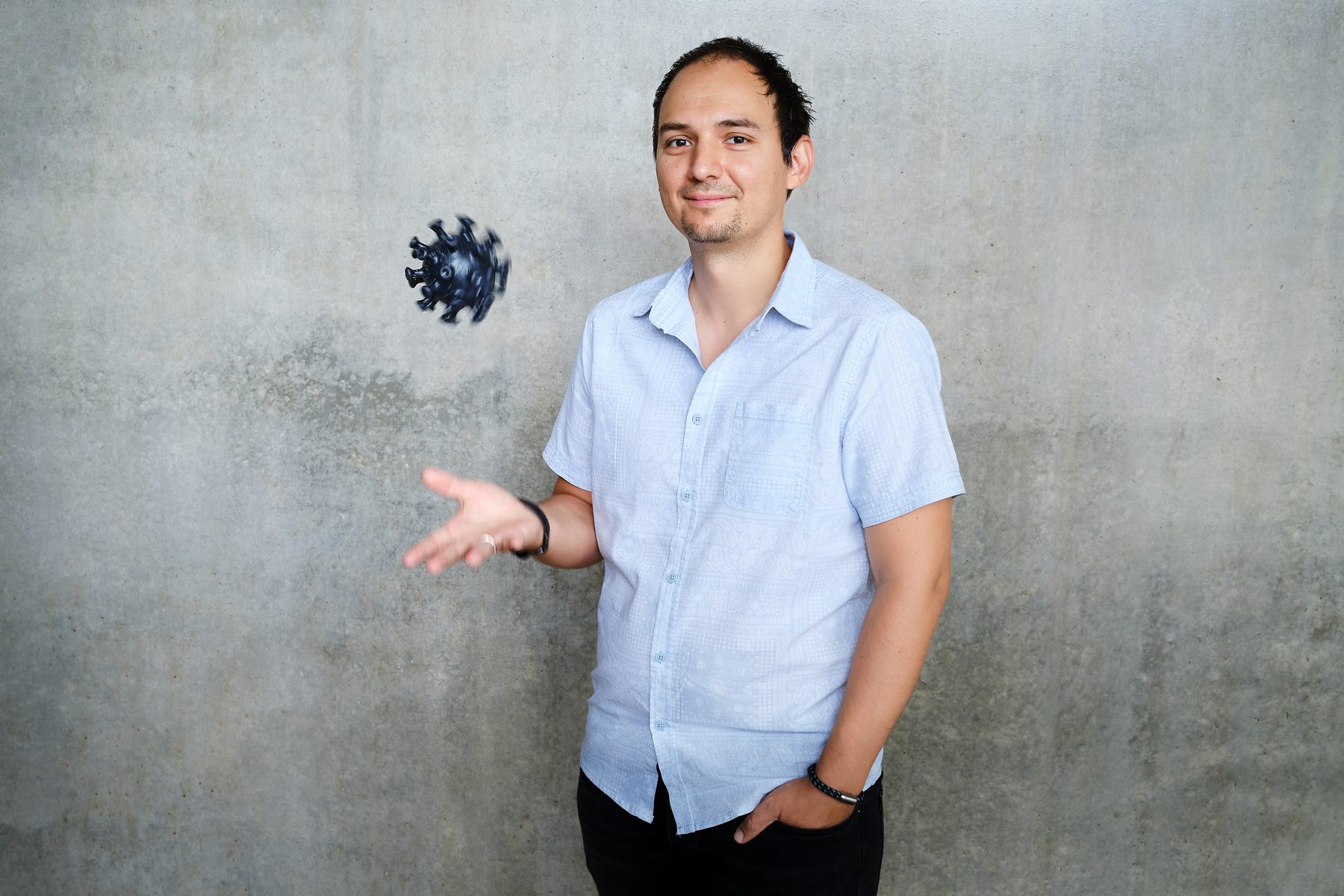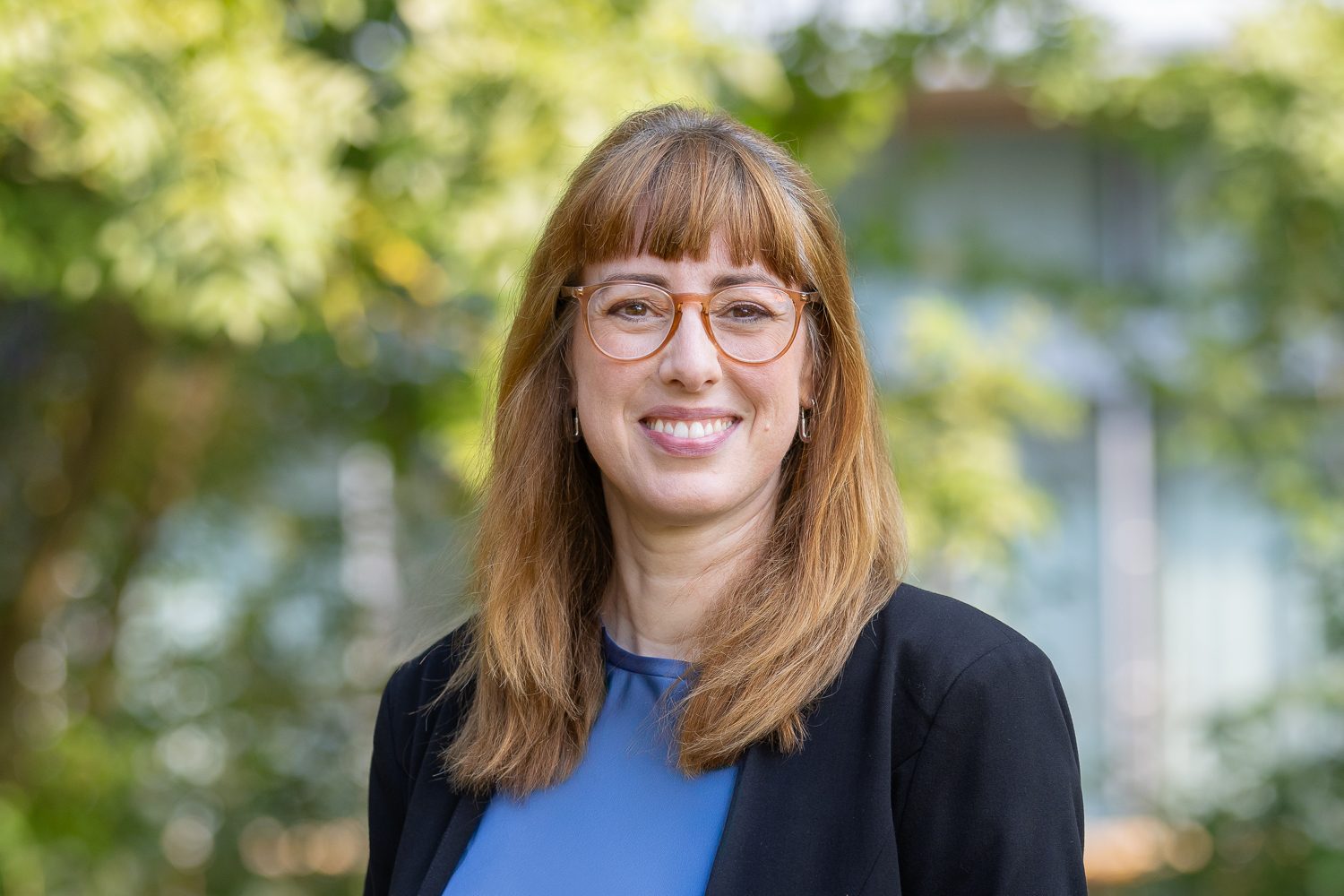
“If everything goes well, a drug against COVID-19 could be on the market in a few years based on our research.” — Interview with Dr Ruben R. Rosencrantz
In the Potsdam Science Park, institutes and companies are working on treatments and solutions to further contain the spread of coronavirus or to accelerate the cure. Dr Ruben R. Rosencrantz heads the “Life Science and Bioprocesses” research area and the “Biofunctionalised Materials and (Glyco)Biotechnology” department at the Fraunhofer Institute for Applied Polymer Research IAP. The research area is involved in four initiatives in the fight against COVID-19. The approaches and application opportunities are extremely promising.
Dr Rosencrantz, coronavirus has paralysed public life for a long time and continues to cause drastic consequences for the economy and society. What are you researching to contain the virus?
We are researching solutions to the current pandemic in a total of four projects. In one project, we are developing innovative respiratory masks. Imagine the following situation: Someone is unconscious and has to be resuscitated. If the person has COVID-19, this poses a high risk for the first aider. This is where innovative membranes can offer more safety. Our system filters the viruses out of the inhaled and exhaled air, so that patients and medical staff are better protected. We are also researching antiviral masks. These are coated with biomolecules that kill virus particles directly on contact with the mask. In a third project, we are working together with an industrial partner on highly sensitive rapid tests for the diagnosis of SARS-CoV-2 viruses, but also other pathogens. There is still a great demand for this. In the fourth project, BEAT-COVID, we are involved in the development of a drug against COVID-19.
What exactly is BEAT-COVID about?
BEAT-COVID started in September 2020 and is our largest medical project. The project is part of an initiative of the Fraunhofer-Gesellschaft to fight COVID-19 and is also funded by the Fraunhofer-Gesellschaft. Several Fraunhofer Institutes are jointly developing treatments and platform technologies against COVID-19 and other infectious diseases. In BEAT-COVID, among other things, new RNA active substances and methods of administration are being developed with which a treatment against COVID-19 should be possible. For example, RNA active substances are to be administered via inhalation, because the viruses multiply particularly in the respiratory tract. The active substance inhibits the entry of SARS-CoV-2 into the cell by switching off the docking sites of the virus on the cell. Or we are able to suppress the multiplication of viruses that have already entered. Our contribution in this project is the development of biofunctionalised polymers that coat and stabilise the RNA and thus improve its uptake into the target cells in the body. This therefore enables more targeted drug delivery for more efficient treatment of COVID-19.
Biofunctionalised polymers – that sounds a bit unwieldy for people who don’t work in the field. Could you explain?
Polymers are long-chain molecules that are extremely diverse in nature, but can also be produced artificially. Polymers are usually associated with plastics. But their areas of application are far more extensive. For example, medical technology or pharmaceuticals would be inconceivable today without polymers. One example is polyethylene glycol, which is a component of BioNTech-Pfizer’s coronavirus vaccine. It is part of the lipid nanoparticles that increase the stability of the mRNA vaccine. Biofunctionalised polymers are polymers that can interact with biological entities or be combined with biomolecules. In BEAT-COVID, glycopolymers, a special class of biofunctionalised polymers, are used to coat RNA. In a figurative sense, they function like a kind of packaging so that the RNA can pass intact through the mucus layer in the lungs to the cell.
At BEAT-COVID, the main focus is on treatment options. Why is that so important from your point of view?
Coronavirus will probably keep us busy for some time. It will take a while until everyone is vaccinated and it is very likely that mutations of SARS-CoV-2 will make new vaccinations and possibly new vaccines necessary again. Moreover, no vaccine provides 100 percent protection. Therefore, it is very important to develop efficient treatments to cure the disease or to minimise severe courses of the disease.
When will such a drug against COVID-19 be available?
That is difficult to say because we are still in the middle of research. If all goes well, our research may bring a drug against COVID-19 to the market in a few years. However, the technologies we are working on serve as a platform technology and can also be used for other infectious diseases and agents.
What have you learned from the pandemic? How will your current research help in future pandemics?
If the pandemic has done anything good – as paradoxical as this may sound – it is that it has led to the advancement of RNA-based technology – from vaccines to what we are developing with BEAT-COVID for treatment. These technologies from BEAT-COVID are likely to be very universal, which would help us in the event of a future pandemic. Personal protection through masks will continue to be important, even with new viruses in the future. The system that can protect first responders from viruses during resuscitation could even become a new standard.
To what extent do you benefit in your research work from the location of the Fraunhofer IAP in the Potsdam Science Park? How much do you exchange with other people & organisations at the location?
It helps us enormously that we are located in the Potsdam Science Park. There is a lot of interaction with the Fraunhofer IZI-BB [Fraunhofer Institute for Cell Therapy and Immunology, Institute Division Bioanalytics and Bioprocesses, editor’s note] and a lively exchange with the University of Potsdam as well as with the Max Planck Institutes at the site. We have a very good environment and there are many synergies that we can use. But the Potsdam Science Park is now more than that. Facilities such as the GO:IN and GO:IN 2 innovation centres and other office and laboratory buildings offer plenty of space for start-ups.
You did your doctorate in Aachen and have been at the Fraunhofer IAP in the Potsdam Science Park since 2015. How much has the location changed since your first day?
The location has developed extremely since 2015. In the meantime, the Potsdam Science Park is not only a location for science, but also a business location. I think that’s very important to facilitate the commercialisation of research results. There are also initiatives in our research area that can lead to the founding of start-ups. In the Potsdam Science Park, there are more and more offers that support this. The development of the location is very visible. Nevertheless, I can still look out over a lot of greenery from my office. I find that very inspiring for my work.
Dr Rosencrantz, thank you for the interview.
This blog and the projects of Standortmanagement Golm GmbH in the Potsdam Science Park are funded by the European Regional Development Fund (ERDF) and the State of Brandenburg.
Photo: Dr. Ruben R. Rosencrantz © Fraunhofer IAP, Photo: Jadwiga Galties
Contact

Karen Esser
PR & Communications
karen.esser@potsdam-sciencepark.de + 49 331 237 351 103